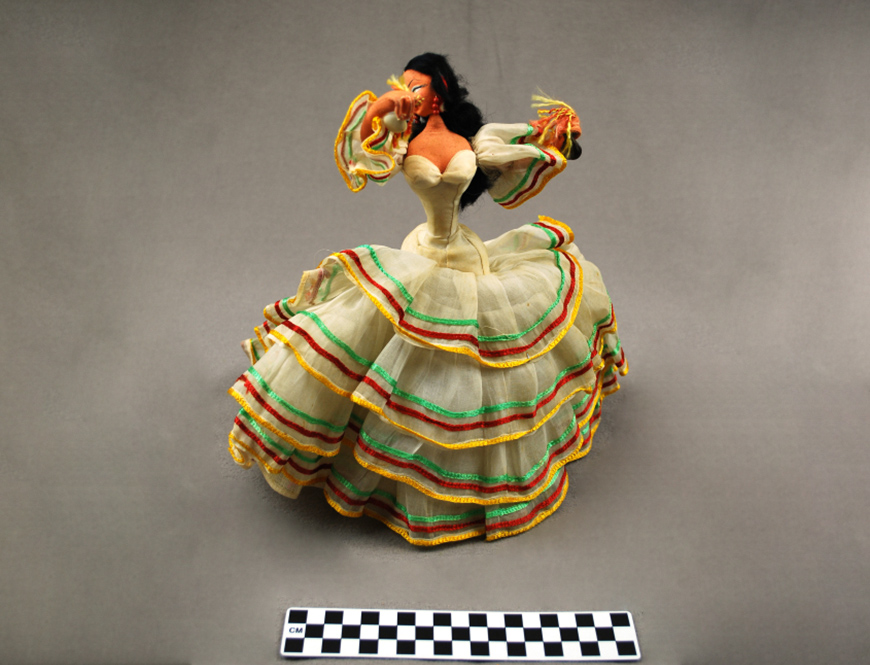This doll is a figure of a dancing woman wearing a stylized Hispanic dress. Dresses like these were typically worn in a traditional Mexican folk dance. Baile Folklórico is Spanish for “folk dance” and is the term for the various traditional dances of the Latin American people, from South America to Mexico and Central America. These dances are expressions of the lives and culture of the Latin American people, they use indigenous and inherited folk dances to make a religious, social, or political statement. The dresses used are typically brightly colored and have a long skirt with many layers so they flare out when the dancer spins.
With the end of the Mexican Revolution in the early 20th century came a new era in Mexico, the war had ended but the culture and government was radically changing. The cultural renaissance happening in Mexico at this time provoked a dialogue on the social inequalities and the ambiguity of the Mexican identity. Famous modern artists, such as Diego Rivera and Frida Kahlo, expressed these inequalities through public art. Baile Folklórico dances became popular at this time as well, while dramatic changes were happening in society the dances revived the awareness of the native heritage.
The Ballet Folklórico de Mexico, created by Amalia Hernández in the late 1950s, was the first professional folklórico performing company. It is internationally recognized and serves as ambassador of Mexican folklore and arts across the world. The Ballet Folklórico has helped significantly in not only the preservation, but the growth of the Mexican Baile Folklórico traditions. Many of the Mexican States have their own distinct techniques and costumes, attributed to geographic differences or influences of indigenous or European groups. A variety of Ballet Folklórico dances are featured every year here at the UTSA Institute of Texan Cultures during the Texas FolkLife Festival.
The cultural renaissance in Mexico resonated throughout the 20th Century, no doubt inspiring in the Mexican American population in the U.S. During the Civil Rights Movement in the 1950s and 1960s. Along with African Americans, all people of color including Chicanos began to assert their cultural and historical heritage through art during this time. The intended audiences of these works were la gente del barrio, or the people from the local communities or neighborhoods. These various art mediums confront and affirm traditions, beliefs, and practices of the culture. They are intended to not only express heritage, but to educate and empower people by celebrating their cultural identity and confronting social issues. Today, muralism is still popular in asserting the identity of a culture. San Antonio is known for its downtown murals where artists, such as Adriana Garcia, and other local artists unite and inspire the community through public art. The San Anto Cultural Arts, established in 1933, has a public art program that encourages members of the community to participate in the creation of murals, inspiring pride in the community.
